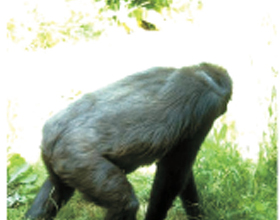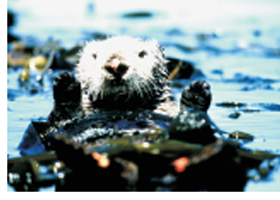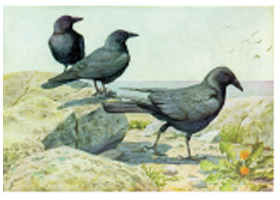ANIMALS THAT USE TOOLS
When Leah, a female gorilla in the Congo, was observed using a stick to help her wade through a pool of water, evolutionists claimed that this was further evidence that apes and humans are closely related. Some even suggested that this meant that apes were beginning to “discover technology”.
HAVE GORILLAS ALWAYS USED STICKS?
Anthropologist Desmond Morris wrote, 'What we are seeing here is the birth of gorilla technology. It may only be the first step on a journey on which we humans have advanced a million miles, but it is still a first step.'1 Dr. Thomas Breuer of the New York-based Wildlife Conservation Society said, 'It was exactly how you or I might have tested the depth of the water.'2 Dr. Breuer also said, 'Tool usage in wild apes provides us with valuable insights into the evolution of our own species and the abilities of other species. Seeing it for the first time in gorillas is important on many different levels.'3
Are these claims justified? What does the case of the gorilla with the stick really prove? Just one thing: gorillas sometimes use sticks!

Are we really seeing “the birth of gorilla technology?”
And for all we know they have always done so — we just haven't noticed it before. Do these evolutionists really believe that in a few thousand years gorillas will develop the ability to build computers and space ships, drive motor cars and gain academic degrees?
NOT UNUSUAL
Tool use in animals is not that unusual, and is not restricted to primates either. Some other mammals seem much more accomplished at using tools. Dolphins have been observed to use sponges to root around the sea-bed in their search for food, and sea otters use rocks to smash open shell-fish. Elephants will sometimes break branches off trees and use them as 'fly-swatters.'

Sea otters sometimes use rocks to smash open shell-fish to get at the flesh inside.
It seems that some birds do even better than those mammals when it comes to using tools. Karl Fr. Hohenstein described how Hyacinthine macaws in South America actually shaped pieces of willow wood before holding them in their beaks to help them crack tough palm nuts.4 This behaviour was not learned, and other types of macaw were unable to copy it. The Woodpecker finches of the Galapagos Islands use pieces of cactus spines to dig insects from trees.
Some members of the crow family are very good at using tools, and appear to use reason, implying high intelligence. A captive crow called Betty fashioned a hook out of wire to reach food. Researchers at Oxford University were conducting an experiment to see whether the birds could lift food from a vertical tube using either a straight piece of wire or a hook. They were amazed to see Betty bend the wire into a hook before using it to retrieve the nuts, which she succeeded in doing nine times out of ten. Commenting on Betty's behaviour, Alex Kacelnik, Professor of Behavioural Ecology, said, 'It is not only cleverer than we think in this particular direction but probably, at least in relation to tools, has a higher level of understanding than chimpanzees.' And he added, 'Although many animals use tools, purposeful modification of objects to solve new problems, without training or prior experience, is virtually unknown.' Similar tool-making has been observed in New Caledonian crows.5

Crows can actually fashion tools before using them.
IRRELEVANT
Where do these examples leave claims that the behaviour of Leah the gorilla tells us something about our own evolution? It shows that these claims are false. Leah's use of a stick to test the depth of water is utterly irrelevant to the creation-evolution debate — unless, of course, we are more closely related to crows than to gorillas, an idea which no evolutionist would agree with.
Gorillas are no more likely to develop life-changing technology than sea otters, dolphins or crows. These examples simply prove that many animals are cleverer than most people think, and should give us greater cause to marvel at the variety of God's creation. In the words of the Psalmist: 'How many are your works, O Lord! In wisdom you made them all.' (Psalm 104:24)
REFERENCES:
- Daily Mail, 3rd. October 2005
- NewScientist.com 8th October 2005.
- “One small step for Leah is a giant leap for wild gorillas”, Telegraph.co.uk, 30th September 2005.
- Gofiederte Walt, Issue 12/87, Translated by Tony Pittman.
- “Crows prove they are no birdbrains”, BBC News Online, 8th August 2002.
Factsheets published regularly by Creation Resources Trust, P.O. Box 3237, Yeovil, BA22 7WD
(Registered charity No 1016666) Further copies (in full color) can be downloaded from our website. www.c-r-t.co.uk © 2005

